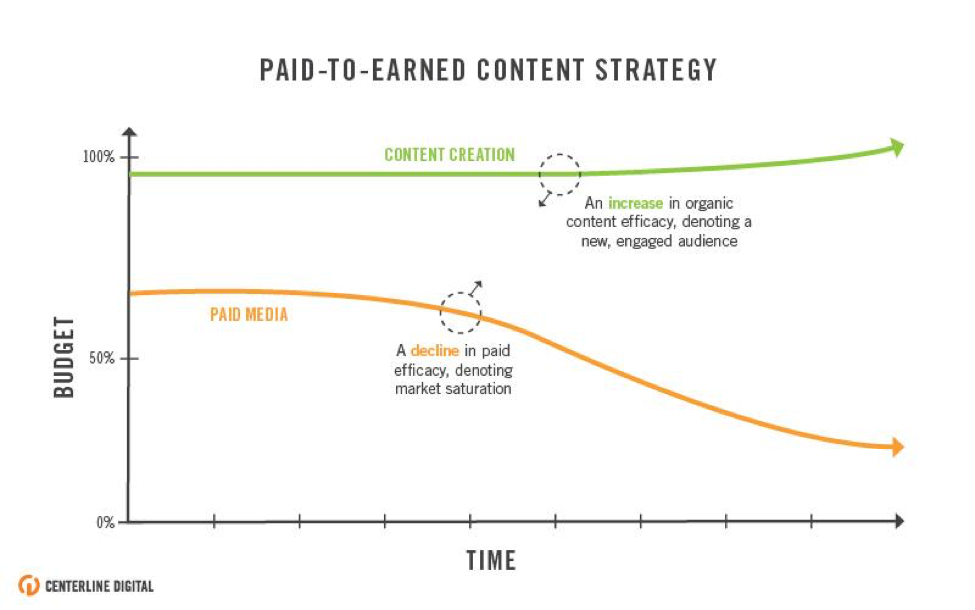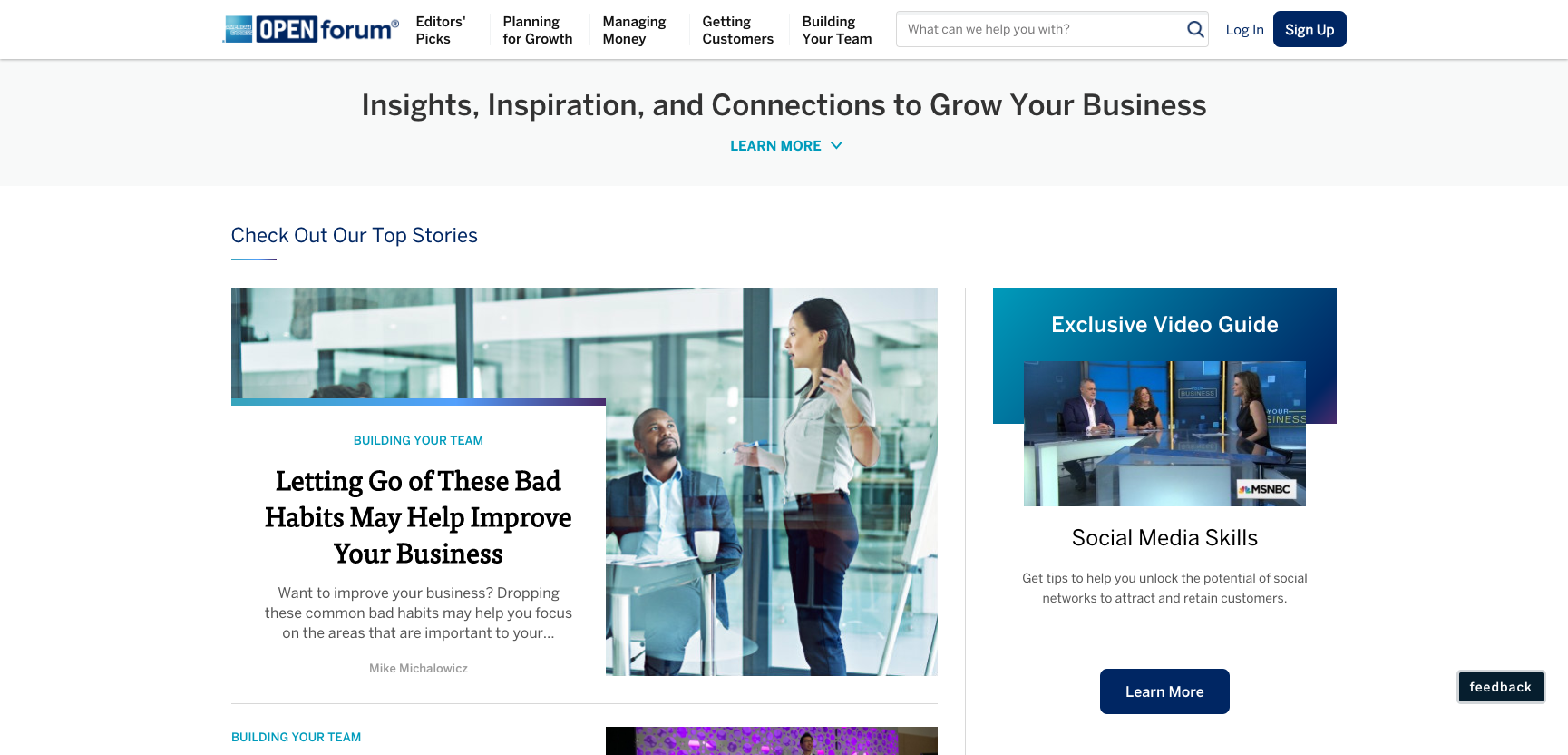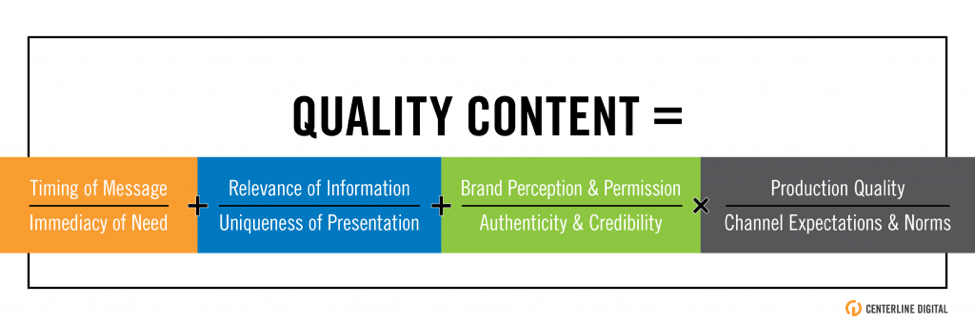- Share The Argument Against Traditional Content Marketing on Facebook
- Share The Argument Against Traditional Content Marketing on Twitter
- Share The Argument Against Traditional Content Marketing on Linkedin
- Share The Argument Against Traditional Content Marketing via email
Content marketing has succeeded too well.
A victim of its own success, content marketing is a model that has been so highly adopted it no longer works as optimally as it used to. As much as we’d like to believe that content of value will rise above the din of marketplaces—like a solitary tower in a green field—it no longer always works that way.
In this piece, we look at where we are and what’s gotten us here. Then we’ll break down how to optimize a content marketing strategy in today’s world for it to find true success.
Traditional Content Marketing’s Effectiveness Has Been Diluted
Let’s define content marketing. From the Content Marketing Institute (CMI):
Content marketing is a strategic marketing approach focused on creating and distributing valuable, relevant, and consistent content to attract and retain a clearly-defined audience—and, ultimately, to drive profitable customer action.
Instead of pitching your products or services, you are providing truly relevant and useful content to your prospects and customers to help them solve their issues.
Now I hate to do this, but I have to get pedantic. Further into the defining piece, CMI puts the emphasis on “valuable” and “relevant” as the differentiators between just plain marketing and content marketing. Which is cool. I like value and relevance as much as the next guy.
But that doesn’t mean I, or the audience of the brands I work with, are always looking to engage with valuable, relevant content. Sometimes, there has to be something that happens before that content to tilt an audience’s interest toward value. Sometimes there needs to be an attention-getter that might not be of any real value at all.
Why? Because as odd as it sounds: there’s arguably too much valuable, relevant content out there now! There’s too much content full stop.
That’s right. As marketers, we’ve done such a good job of buying into the “valuable, relevant” content idea that we’re drowning our audience in it. In so doing, we’ve brought the need for advertising (gasp!) back into favor. The future of content marketing success drives through advertising. Social media ads (Check out Larry Kim’s 10 Killer Social Media Advertising Hacks For Content Marketers). Display. SEM. Native advertising. TV ads. And so on and so forth.
To Win With Content Marketing, You’ll Have to Pay
Other, smarter people have taken swipes at this topic before. Tom Webster’s piece on content arbitrage from way back in 2013 still jumps to the top of my mind.
In this piece, he writes about how much easier it used to be get a blog off the ground. Why? Because the first movers in a space have the advantage of being ahead of the impending noise.
In the case of modern marketing, that’s brain space—a new idea on a topic people are just starting to get interested in. It’s also distribution space—a new channel in which there’s relatively little noise and the right audience for the topic starting to gather. Those winners bought low and sold high on a content type and channel.
(Mark Schaefer takes a bit more of a “link-bait and scare tactic” approach to the same idea in his 2014 piece about “content shock.” Still worth reading.)
Every channel has this period of time, with first mover success stories. That magical overlap where someone sees a green field in which to build a singular tower. To be the only one found. And therefore, to truly use content marketing in its purest form: creating content of value that’s easily found by the right audience and thus, works.
The rest of us must pay to build our tower at least ever so slightly taller than the others that now litter what used to be a green field.
Enter “Paid-to-Earned Content Marketing Models”
How do we resolve wanting to market with content of value, and being cool with paying for the attention? How about creating “paid-to-earned content marketing models?”
That’s right. Let’s push the idea of content marketing closer to paid marketing. Let’s do so with the intent to shift budget from paid promotion to more content creation over time as we gain more earned media.

Selling Ownership of an Area of Expertise
In this model of “paid-to-earned content marketing,” we change the goals of our paid media. We don’t look to make a sale right away. We look to sell ownership of our area of expertise.
Most marketers make decisions between paid media and content marketing based on measuring short-term “low hanging fruit” gains in sales versus long-term “build customers for life” gains. What if instead, the goal of our paid media shifted from driving sales to gaining interest? That would change the types of messages we put into our paid media. It would make our ads less pushy, more worthwhile. The conversion might no longer be “buy,” but “subscribe.”
Yes, this will delay the ROI measurement we crave, which is so much more pressing when it comes to paid. (Figure out the best way to Determine Your Content Marketing ROI with Michael Brenner.) But it’s a good way to approach building audience, and there’s precedent to this as a means to positive ends. For example: Amex OPEN forum.
Marketers point to the Amex OPEN forum as a success model for modern content marketing. And in many ways, it is. It’s become the go-to resource for small business owners in need of guidance in marketing, sales, management, IT and more. It’s a lightly-sponsored hub featuring content of unprecedented value. It provides access to world-changing business leaders that small business owners could never afford to talk to on their own. Echoing the words of CMI, Amex, “is providing truly relevant and useful content to their prospects and customers to help them solve their issues, instead of pitching products or services.”

But the flow of small business owners that flock to the site day after day was sparked by a seven-figure ad budget for Small Business Saturday and other campaigns. Lucky for Amex, they were also the first tower in a green field! The two things together—paid media to spark a path toward a content arbitrage moment—is, quite literally, gold.
We should also look at the type(s) of content that used to hold the banner of relevant and valuable. That has dramatically changed as people’s expectations of value have become more sophisticated.
Less Content; Higher Quality
In the paid-to-earned model above, we’re actually talking about creating less content. What we’re looking to drop in terms of volume, we’ll more than make up for in quality. Let’s look at what that really means.
Some content marketers fell into bad habits because volume of content alone used to be able to build a tall, strong tower out in the green field. By creating lots of content at a rapid, regular clip, you could start to own certain search terms. In turn, by owning those terms you could make yourself appear to be the foremost authority by simply overwhelming the first Google search engine results page (SERP). The content to achieve this was often short and superficial. It was keyword-laden rather than value-laden. It was listicles and linkbait.
Thank Google for spotting the flaw in a world built on volume alone. Marketers have begun to identify that it is specific people we really want to target, rather than “anyone and everyone.” Quality is now the more important trait.
However, quality is also an elusive trait. I’ve gone on way too long about what “quality content” really means already. So I’ll summarize. Quality isn’t simply about the production value of a video or the cleverness of an infographic title. It’s about content that actually addresses a verified audience need, that speaks to them in the way they would like to be spoken to, in their channel of preference. It’s content that meets the context of their situation. And it’s content that truly provides value.
That results in fewer, more in-depth, more targeted pieces of content. That’s what builds a tower that stands the test of time, rather than something tall but rickety. And the paid promotion of quality content helps establish your thought leadership as the most influential tower.
How to Go With the Right Flow
So far we’ve established that content marketing—in its traditional form—now needs optimizing to maintain its effectiveness. We marketers took too much advantage of the initial opportunity. Go us.
Therefore, we have to adjust our thinking in two ways. We need a greater focus on quality content that actively eschews quantity. And we need to attract a flow to our content with paid means, rather than relying solely on organic paths. What’s the third leg to a successful content-centric marketing platform? Ensuring we target the right audience with much more specificity.
Luckily, this is something you’re already tilting toward if you’ve started reducing the quantity of content you’re making to focus on quality. Why? Because a quantity focus means you’re hacking together less-specific content for the masses, rather than highly specific content for the few. A quality focus, on the other hand, means you’re getting deep into the specific details that matter to the much more invested members of your audience. Along with CRM, automation, and social listening technology, you can further personalize content and experiences with the time freed from trying to publish too often.
A paid push to create an audience flow to your highly-specific content gets even better when you apply the same thinking and technology. Programmatic ad buys allow you to get the right ad, leading to the right audience member, in the right channel, at precisely the right time.
The additional requirement for this is better audience understanding and segmentation based on data, rather than gut feeling. Again—more achievable when you’re less concerned with playing the quantity game.
To Sum Up
Content marketing is an amazing way to build a relationship with audiences that ultimately leads to revenue. Can it stand alone as your only means of success in promoting your service, product, or offering? I don’t think so. At least for most, finding the green field in which to build a singular tower in an area of expertise in a burgeoning channel is, at best, a game of timing and luck. Using paid media to amplify the audience for your content significantly increases the effectiveness of your content marketing.
To read more about content marketing and the changing shape of the PESO media mix (Paid, Earned, Shared and Owned), look here! If you love content marketing and want to get ahead in a content marketing career, download The Ultimate Guide to a Content Marketing Career eBook, a joint production between Curata and LinkedIn.













